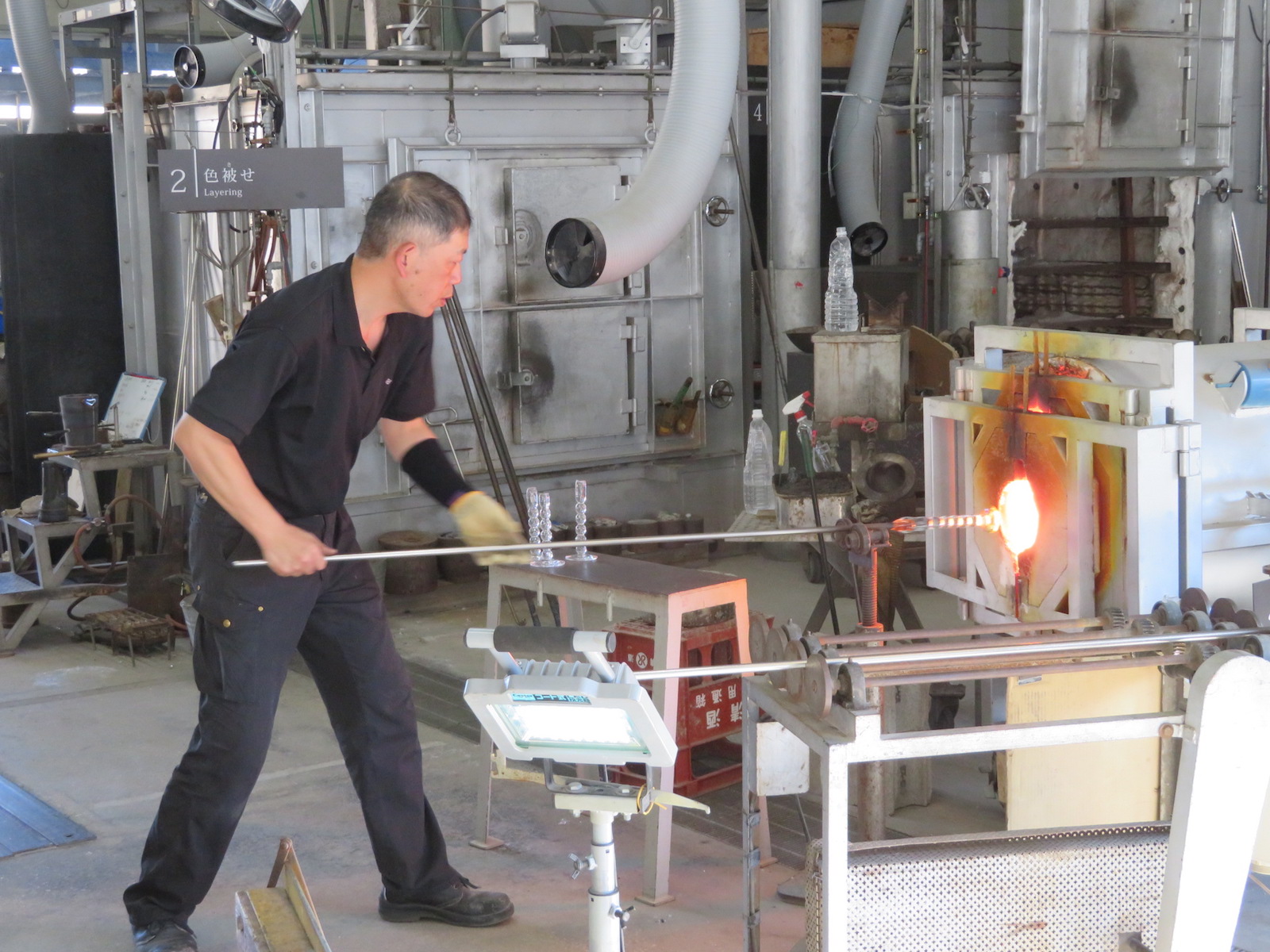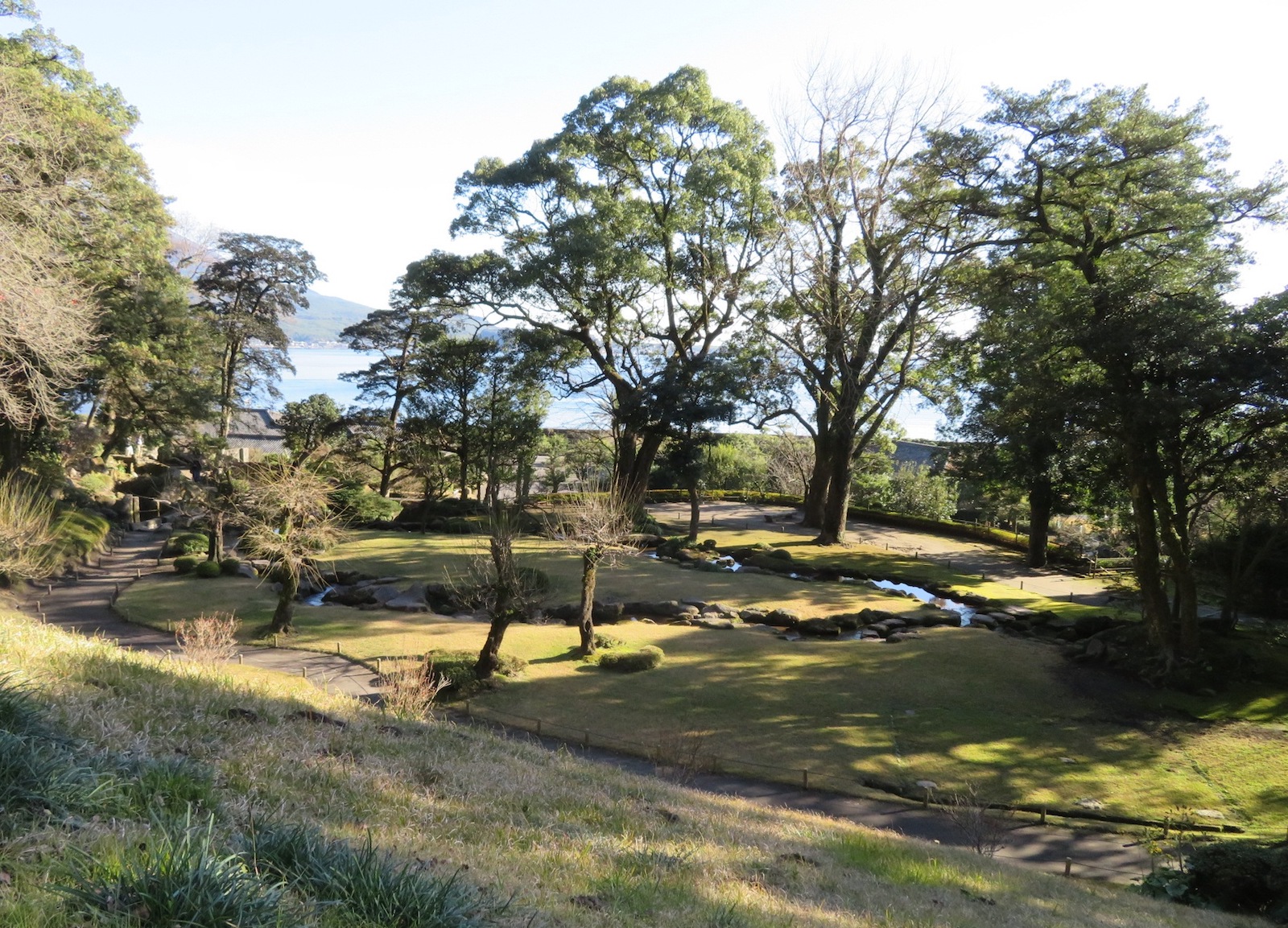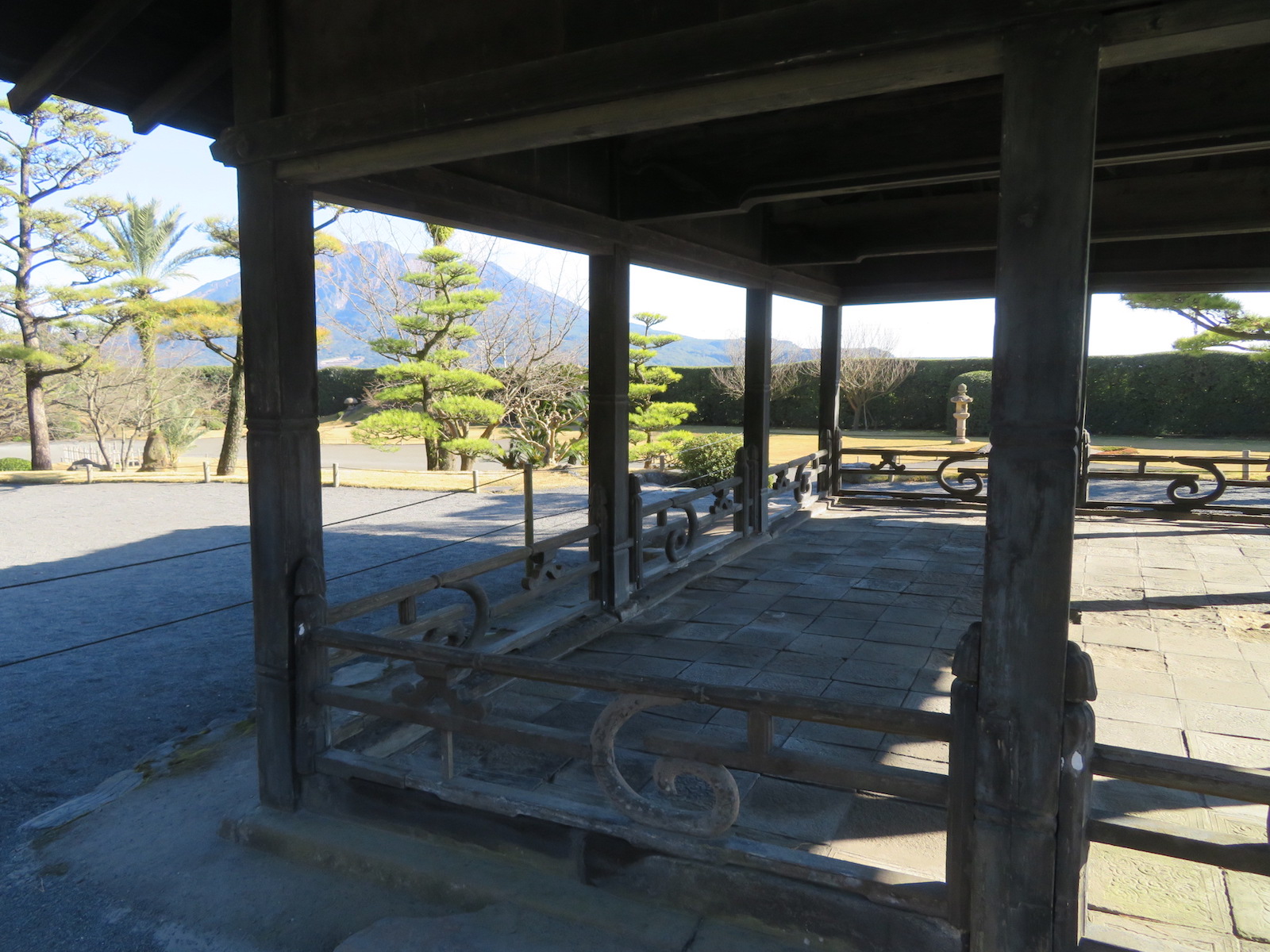On the western shore of Kinko Bay, just north of the city of Kagoshima, sits an elegant 17th century villa with heart-stopping views across the bay to Sakurajima, an active volcano that regularly spews clouds of steam or ash. Just next door to the villa is a museum in a 19th century stone factory building, the site of some of Japan's earliest industrial endeavors.
The juxtaposition is a bit incongruous until one visits and learns more of the history of the two.
In the mid-19th century, Japan was crumbling, a stagnant victim of two and a half centuries of relative peace and isolation from the rest of the world. The Shimadzu family, lords of Satsuma since the Kamakura Period (1192-1333), recognized that Japan's position of substantial isolation from the rest of the world could not continue in light of the increased presence of western powers in Asia. They concluded that an influx of Western power and influence was inevitable, and that Japan was at risk of colonization if it did not act to strengthen its own defenses as quickly as possible.

To that end, Shimadzu Nariakira (1809-1858), 28th Shimadzu lord of Satsuma, decided to build a reverbatory furnace, a kind of furnace that that bounces heat off the domed ceiling of the furnace in order to amplify it. Reverbatory furnaces were a common European technology of the 17th-18th centuries, but were known in Japan at that time only from Dutch writings. Nariakira wanted to cast cannons so that his men were ready to defend against any invasion by the western powers (in particular the U.S. and UK) and he believed that a reverbatory furnace would be especially useful to facilitate that goal. He decided to clear away a bamboo grove just south of his own bayside villa to provide a location for the furnace and other related structures, the first such modern factory complex in Japan.
The complex was named Shuseikan and its 1865 stone machinery factory building still stands, one of 23 sites include in the UNESCO World Heritage listing “Sites of Japan’s Meiji Industrial Revolution: Iron and Steel, Shipbuilding and Coal Mining.” In fact, the Shuseikan complex was begun in 1851, more than 15 years before the Meiji Restoration that is credited with Japan's rapid modernization/industrialization, a credit to Lord Nariakira's foresight.
Shuseikan's situation right on the bay made shipping of raw materials and finished goods easy, while the mountains behind the site provided plentiful fresh water, always essential to factory operation. Yet, in those early days, there was a lot of trial and error, as the only source of information on what to do was Dutch texts, and even production infrastructure had to be fabricated on-site before production could move forward. When Japan became more open after 1868, Western advisers and Western machinery became available. Alas, Shuseikan's place in the sun did not last long. Many of its buildings were destroyed in 1877 during the Satsuma Rebellion; after that, a number of Shuseikan's facilities were relocated into Kagoshima city.
The factory building now contains museum exhibits outlining the long and distinguished history of the Shimadzu clan as well as the development of Shuseikan as an early industrial site, particularly for manufacturing weapons. Be sure to look for the display about the 15 young men of Satsuma who were smuggled out of Japan in 1864 (it was illegal to travel abroad at the time) to study in England and acquire first hand knowledge to be applied back in Japan.
A visitors center contains a 1:10 scale model of the reverbatory furnace, as well as explanations particularly of the men involved in Shuseikan's development. The foundations of the reverbatory furnace itself are nearby.
Other production at Shuseikan includes pottery/ceramics and kiriko (cut glass). Satsuma Kiriko is particularly distinctive, as the uncut glass is often produced as three layers of glass, clear and two colors, with the colors particularly revealed by the patterns of cutting the glass. The Shuseikan glass studio was intended to produce items suitable for export. Today, visitors can watch both glass blowing and glass cutting in the glassworks factory. The gallery/shop next door is a great place to appreciate the complexity of the finished product and maybe pick up your own special kiriko souvenir.

After viewing Shuseikan and those industrial sites, enter Sengan-en, the villa and garden complex that served as the country home of the Shimadzu family from 1658, when the 19th Shimadzu lord, Mitsuhisa, decided to have the villa built and the surrounding area landscaped.
The villa is an exquisite example of 17th century architecture and provides glimpses into how the nobility of the pre-industrial era lived. It was actually used as a set during the filming of the 2018 historical drama "Segodon", a story largely based in the Kagoshima area.
If you want to better imagine yourself living in those times or starring in a period movie, you can rent a kimono or samurai armour for one hour (price is between 5,000 yen and 8,000 yen).

The villa makes extensive use of cedar brought from nearby Yakushima, some of it said to be from trees more than 1,000 years old. The ceilings and transoms are particularly fine examples of the wood. Unusually for an historical house, several of the rooms in the villa are furnished. This brings the villa to life all the more. It's easy to imagine European visitors sitting down to dinner, or Nariakira turning in for the night.

The artwork--wall hangings and paintings on fusuma sliding doors--also contribute to the elegant atmosphere. One almost whimsical feature of the villa are the kugi-kakushi (nail covers), small objects hung on beams to cover nails used in construction. At Sengan-en, some of them are metal images of bats while others are ceramic renditions of the famous Satsuma daikon, which is round and looks more like a turnip than a daikon.
From several rooms, there are amazing views of Sakurajima, almost as if it is part of the artwork gracing the house.

Similarly, views of Sakurajima are also significant when strolling the garden attached to the villa. In fact, the villa is surrounded by 4.85 hectares (12 acres) of gardens, ponds, waterways and walkways, designed to feature Sakurajima views from various locations. Predictably, water features also play a significant role in the garden's landscaping.

Thanks to the size of the garden, several different landscaping styles are employed, some more formal and others more natural. The lowest part of the garden, between the house and the street that runs along the bay shore, is grass covered and more sculpted, although many of the stone lanterns in the garden are not made of completely carved/shaped stone, but have features that seem natural.

Also in the lower garden is the 17th century Bogakuro Pavilion, often used for garden parties. In the late 19th century, Nariakira’s successors, now elevated to the rank of prince, frequently entertained European dignitaries here as they passed through, using an interesting blend of Japanese and Western food and entertainment.
Don't miss the cat shrine, where a handy signboard explains the significance of enshrining these cats (not a usual practice in Japan). Also popular with foreigners is the wooded trail leading up the hillside behind the villa to a lookout point.
Between the entrance to Sengan-en and the actual villa and garden there are a number of buildings containing shops and displays. The shops could be a good place to learn more about Satsuma-yaki, Kagoshima-style ceramics, with its ivory base and gold accents or have a look at more Satsuma Kiriko pieces. Other locally crafted items are also available in the shops. There is also a small building exhibiting Jigen-ryu swordsmanship.
If you've built an appetite during your exploration, there are a couple of restaurants as well as a small coffee shop. For something unusually, check out the recently introduced coffee wagon, which sells freshly brewed coffee made with beans that were roasted using the heat of Sakurajima.
Sengan-en and Shuseikan are open daily from 8:30 to 17:30. There are two ticket options: 1) visit the museum and gardens only (1,000 yen) or 2) visit the museum, the gardens, and the villa (1,500 yen). The entire complex can be explored successfully in half a day.
Vicki L Beyer is a free lance travel writer who regularly contributes to Japan Today and also blogs about experiencing Japan. Follow her blog at jigsaw-japan.com.
© Japan Today Take our user survey and make your voice heard.
Take our user survey and make your voice heard.















No Comment
Login to comment